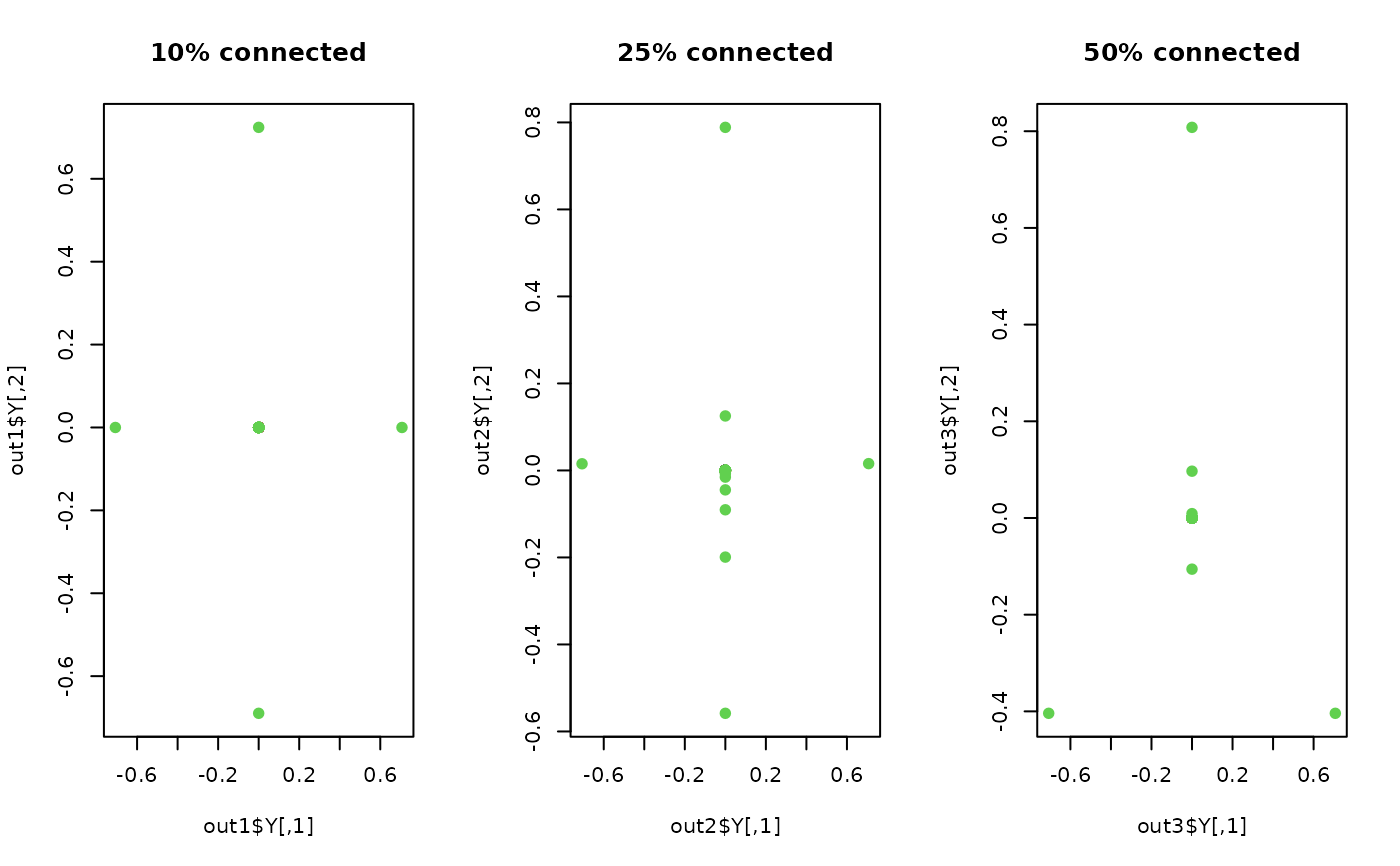Constrained Graph Embedding (CGE) is a semi-supervised embedding method that incorporates partially available label information into the graph structure that find embeddings consistent with the labels.
Arguments
- X
an \((n\times p)\) matrix or data frame whose rows are observations
- label
a length-\(n\) vector of data class labels. It should contain
NAelements for missing label.- ndim
an integer-valued target dimension.
- type
a vector of neighborhood graph construction. Following types are supported;
c("knn",k),c("enn",radius), andc("proportion",ratio). Default isc("proportion",0.1), connecting about 1/10 of nearest data points among all data points. See alsoaux.graphnbdfor more details.- preprocess
an additional option for preprocessing the data. Default is
"null". See alsoaux.preprocessfor more details.
Value
a named list containing
- Y
an \((n\times ndim)\) matrix whose rows are embedded observations.
- trfinfo
a list containing information for out-of-sample prediction.
References
He X, Ji M, Bao H (2009). “Graph Embedding with Constraints.” In IJCAI.
Examples
## use iris data
data(iris)
X = as.matrix(iris[,2:4])
label = as.integer(iris[,5])
lcols = as.factor(label)
## copy a label and let 10% of elements be missing
nlabel = length(label)
nmissing = round(nlabel*0.10)
label_missing = label
label_missing[sample(1:nlabel, nmissing)]=NA
## try different neighborhood sizes
out1 = do.cge(X, label_missing, type=c("proportion",0.10))
out2 = do.cge(X, label_missing, type=c("proportion",0.25))
out3 = do.cge(X, label_missing, type=c("proportion",0.50))
## visualize
opar = par(no.readonly=TRUE)
par(mfrow=c(1,3))
plot(out1$Y, main="10% connected", pch=19, col=lcols)
plot(out2$Y, main="25% connected", pch=19, col=lcols)
plot(out3$Y, main="50% connected", pch=19, col=lcols)
 par(opar)
par(opar)